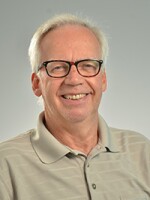Before Allen Stallings started work in a NASCAR pit crew he was a linebacker for Greensboro College in North Carolina. The transition from the playing field to the race track is becoming more common. In fact, NASCAR is recruiting former college athletes for these high pressure jobs.
Stallings and the other race teams on the NASCAR circuit stopped at the Kansas Speedway over the weekend for the Hollywood Casino 400.
For a series of stops at about 11 seconds each, Stallings needs to be on top of his game. He’s on the pit crew for Chase Elliott, who’s among the drivers involved in the chase for the NASCAR Sprint Cup championship.
“It takes strength. But it’s more of precision,” says Stallings. “Strength and precision because you’ve got to be able to run and carry with the tires and handle the tires. The tires are about 75 pounds.”
Just like football teams, the pit crew has a head coach. For Stallings, it’s Chris Burkey. Or in his words, Coach Burkey. “Being a baseball player, football player, wrestler or wherever that might be, we coordinate everything just like a coach does,” says Burkey.
Burkey says he looks for athletes who want a new challenge after wrapping up their collegiate careers, but he says not all of them have what it takes, especially at this time of the year when everything intensifies for the teams in the chase.
“Like any other sport, it’s mental toughness, I think, number one,” says Burkey. “Things are going to go bad. It’s how you can recover from that, especially in racing. Especially being a tire changer, a lot like a quarterback if you throw an interception, you’ve got to get right back out there and compete. Do it again.”
Stallings says Burkey contacted him about a pit crew tryout based on his football background.
“I was never into NASCAR. I never watched a race,” says Stallings. “I asked him, ‘I don’t really know anything about cars, so why would I be on a pit crew?’ I don’t know anything about a car. He says, ‘That’s what we want so we can teach you exactly what to do.’”
The athletes come from all over. One of Stallings’ pit crew teammates played football at UNLV. And it isn’t just football. Brian Haaland was a hockey goaltender at Nebraska-Omaha before he became tire changer.
“Some things that we’re constantly focusing on is our tire changers being square to the car or square to the wheel in order to hit lug nuts in a square position,” says Haaland. “For a goalie, you have to be square to the puck at all times. I think that helped and, obviously, the hand-eye coordination.”
After eight years as a tire changer, Haaland was hired away from the Rick Hendrick Racing team and elevated to be a pit crew coach for the Roger Penske team. He says he’s more secure in his position as a coach.
“It can be really cutthroat,” says Haaland. “I don’t think the fans understand the pressure that can be on some of these guys, especially the tire changers. You’re literally one stop, one bad race away from losing all of your income.”
To help his guys keep their jobs and perform at the highest level, Haaland studies videotape — not after the competition like other sports — but during the race in his pit crew area to analyze each stop as the team looks ahead to the next one.
“You’ve got two tire changers. You’re looking at their lug nut accuracy. Did they miss any lug nuts?” asked Haaland. “Obviously, the less misses the faster the pit stop. When I started in this sport, you could miss one or two lug nuts. But now the top teams out there, the top tire changers don’t miss at all.”
Haaland says a missed lug nut costs three-tenths of a second.
“But when you add up all those tenths, and you’re competing against 40 other pit crews out there every tenth matters. Every hundredth matters.”
These microscopic amounts of time can make a difference. Denny Hamlin won this year’s Daytona 500 by one-hundredth of a second.
Trying to be so precise with the clock builds tension and that’s where Dr. Jack Stark comes in. He’s the Hendrick team psychologist and tries to keep everyone relaxed.
“We’re spending more time with pit crew guys in terms of recruiting them (and) paying them large sums of money,” says Dr. Stark. “Some of these guys make around $150,000 a year.”
But paying six-figures is worth it to the top racing teams, which rake in millions of dollars during a championship season.
For its part, NASCAR is directly reaching out to college athletes. Tryouts took place on six college campuses this year as part of its Drive for Diversity development program. The ones who made an impression were invited to a NASCAR combine outside Charlotte.
Nine former athletes were selected, including three former football players with the Kansas Jayhawks. They’re now in a training program, but in a few years they might be on a pit crew at Kansas Speedway.
Greg Echlin is a sports reporter for KCUR 89.3. Reach him on Twitter @GregEchlin.




